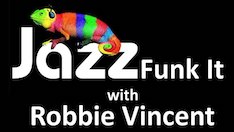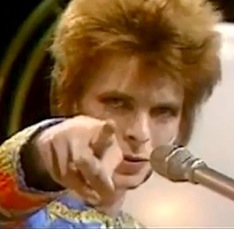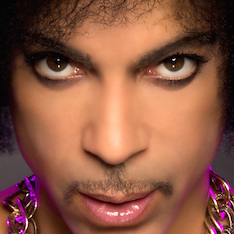➤ The Studio leaps back
into the fray by making
an event of each night
Between 1977 and 1980 New York’s Studio 54 became the most famous disco in the world by operating a highly selective door policy. It closed with a reputation as a “modern-day Gomorrah” amid scandal and jail terms for its frontmen. Studio 54 reopened in September 1981, under new ownership and hosted by club entrepreneurs Jim Fouratt and Rudolf Pieper whose watchword was “dress incandescent”.
During his hyperactive life as a shaper of culture and politics, Fouratt has defined a new vision of arts and entertainment for his own Baby Boomer generation, and several others. In 1981, interviewed by Shapersofthe80s, he assessed the prevailing musical trends and set out his six golden rules for running a successful nightspot.
First published in Disco International, October 1981
❚ “WHAT KID CREOLE HAS DONE IS TAKE LATIN, fuse it with other modern dance music and give the audience a flash show. They’ve brought back theatricality and that’s important because in the 1980s the disco is where theatre is.” For the latest word on the state of the dance, who better to ask than Jim Fouratt, the new frontman at what he calls “the most important nightclub in the world”, Studio 54. The disco which made daily headlines as a jetset playpen – Nastase, the Jaggers, the Kennedys all went there – closed with a Sodom and Gomorrah reputation last year after its disgraced co-founder Steve Rubell was jailed for tax evasion.
A million-dollar facelift later, the new team who’ve been making a progressive entertainments venue out of Studio 54 since September are the elfin Fouratt and his partner, Rudolf Pieper, a German giant with a formidable reputation as a womaniser.
“Ours is not the Studio 54 of 1979,” Fouratt told me. “A new club should always push forward. The new Studio has a big party every Sunday combining performance, video and cabaret – acts like Sharks-a-mania and Strange Party. Wednesday is our Modern Classics night featuring British bands like Lene Lovich. Saturday is our only disco night. We also had Torso dancing every night in our first week and Twyla Tharp’s troupe came in our second.
“After the No Wave scene, people want to be entertained. A theatrical event forces audiences to make an effort and express themselves too.
“We’ve always tried to mix the artist community, the fashionettes and the regular audience. That’s a very Manhattan attitude. We get the Nautilus boys side by side with the adult beautiful people and the downtown kids. Now it’s important to mix music styles: disco, white soul, funk, electronics. Dexy’s for example were lousy as white kids trying to play black music. Spandau Ballet however know exactly how to incorporate black rhythms in a very British way. Here, if it’s a good cold-wave number our deejays play it; if it’s good disco, they play it.
“Ever since we ran Danceteria I’ve thought Latin must become big because it’s so danceable. They are rhythms that just have to cross-over. August Darnell saw that too.”
Fouratt and Rudolf have a knack for keeping one step ahead of what’s new, given that American musical tastes seem to shy ever further away from innovation. At Hurrah, they were first to play only new English music. At Danceteria where dress was Dada, they even attracted avant garde composer John Cage to come hear some weird new bands. This year they borrowed the Underground and the Steve Strange idea of a once-a-week party-night which they called Modern Classics to showcase the New Dance scene and its associated bands like Spandau Ballet and Material.

Rudolf and Fourratt: promoters who breathed new life into the Studio. Photographed © by Shapersofthe80s
Fouratt said: “The environment you create sets up the conditions for the way people behave. Making an event of each night is something I picked up from the Blitz Kids in London. Clubnights in England are not new but to big commericial discos here, they are.
“The kind of person hired to be doorman has to be right: not power-tripping, though their ego is gratified by the power they have. The old Studio 54 made people feel like animals. You don’t have to treat them like dirt because you don’t want them in your club. At Danceteria we’d tell the Bridge and Tunnel people they’d be better off at the Ritz. Rubell’s door selection was based on beauty and money, but looking good doesn’t depend on looking rich. Selection is vital but we look for the way people feel about themselves and we’re getting a great mix. The downtown crowd have no problem getting in.
“It’s important that women and gays feel comfortable
in a club, then everybody else does”
“We’ve always let in (1) unescorted women, (2) couples of any gender if they’re not screwed up, but (3) no single men unless they look good. Guys are the first to give trouble otherwise.
“It’s important that women and gays feel comfortable in a club, then everybody else does. People go out to relax and maybe meet somebody new, but in a singles place it’s just guys hitting on girls. We don’t want to deny those opportunities but there should be an atmosphere where you can say No. Go to the Ritz on a Saturday with 75:25 men to women and you’ll know what I mean. And you need gays because they know how to make nightclubs happen. A lot more attractive women come to places where there are good-looking gay men. Young people don’t make distinctions anyway and I find that all-straight places have an energy which is very oppressive.”
How does Fouratt cope with the uglier face of nightlife, the drug-taking which marred the old Studio’s image? “There is a real drugs problem in New York City,” he said, “and any night-place will have its share. But we’ve never let people deal in drugs. I don’t care what people do – yes, I do care but I’m not going to tell them – so we encourage making out rather than shooting up. I’m not a hedonist, though. I’m a very moral person. The world I live in and the things I do are a big contradiction, but for me principles are important.
“I don’t play any junky bands in my clubs, I don’t want to see anybody die on stage or people come to watch them die. Places that do simply set the wrong role model for kids. Having a good time doesn’t have to be self-destructive.”
❚ WHAT, THEN, ARE FOURATT’S GOLDEN RULES
FOR KEEPING A NIGHTCLUB ELITE AND SECURE?
 “(1) Like and respect the people you want to come in. You have to want to spend your evening with them.
“(1) Like and respect the people you want to come in. You have to want to spend your evening with them.
“(2) Choose staff that you also like so when a customer comes in he sees the kind of people he wants to hang out with, from bouncers to bartenders.
“(3) Have no guestlist. Getting in free is unhealthy, it shows disrespect. Some people always get in free because they create an ambience. They are the poor journalist, A&R people because it’s their job, musicians if I like them and genuine celebrities. That means Mick Jagger.
“(4) Respect an artist even if they’re difficult. Know when to be hard and when to listen, especially with young artists who don’t know how to listen.
“(5) Don’t stint on an adequate sound and light system, or a stage, otherwise you do everyone a disservice.
“(6) And know when to leave. That’s the lesson you learn from experience, like, don’t fall in love with employees, don’t hire people you want to bed, never book a band because they’re your friends, that’s lethal. And when a security person is handling someone, know when not to interfere, know when to walk round the block.
“I hate the Ritz because it applies virtually none of my rules. Clubs I do like are Mudd, Casino 14, Le Rocca, One-U.”
For all the rules, never forget there’s magic, too. Rudolf, who always keeps a low profile, defined the supreme club. “It is one big room and inside, another smaller room and inside that, another. Each room would be more VIP than the preceding room until the last which was for Queen Elizabeth of England. The mystique would be to keep the last room, the centre room, always empty, but give the impression there are people inside.” He laughed.
❚ Five years later, in 1986, the Studio version2 closed its doors
All text © Shapersofthe80s.com

The Studio in 1977: Steve Rubell, Michael Jackson and Aerosmith’s Steven Tyler. Picture: Life magazine
❏❏❏
NOW THE SCHRAGER STORY CAN BE TOLD
➢ Ian Schrager’s new book, Studio 54 “pulls back the velvet rope to capture the power, pleasure, and people at the greatest nightclub of all time” – reviewed in Vanity Fair, August 2017.
➢ Schrager pardonned by Obama – Now 70, and recently pardoned for his 1980 tax evasion conviction at Studio 54 (one of President Barack Obama’s last official acts in 2017), Mr Schrager offers the New York Times some life lessons that helped him thrive for four decades in the cultural cross hairs.


















I was a founder member of the dance act Torso, that Jim mentions. As he says, we performed most nights of the first week of the reopening in September 81. [30 years ago this very month]. We were performing at the Embassy club in London, Jim came down with Spandau to watch us perform. On the strength of what he saw he booked us to perform at Studio 54. We were good, because we were inspired by the best, Trevor Shakes, Leon Herbert and Travis Edwards. Model Dancers on another level.